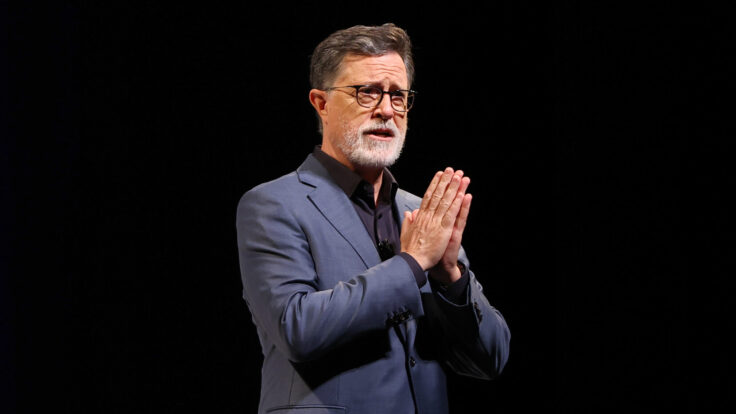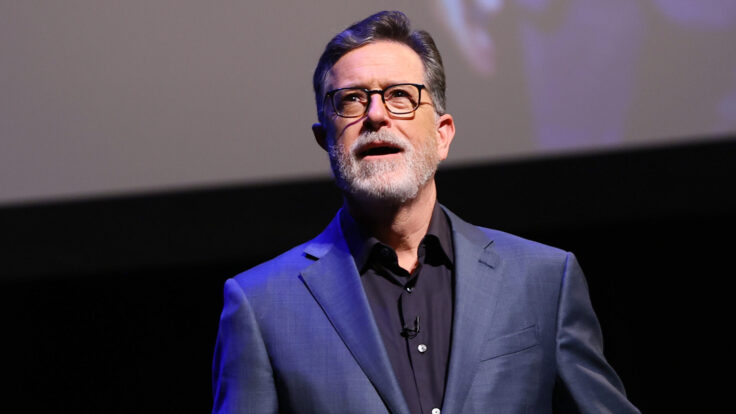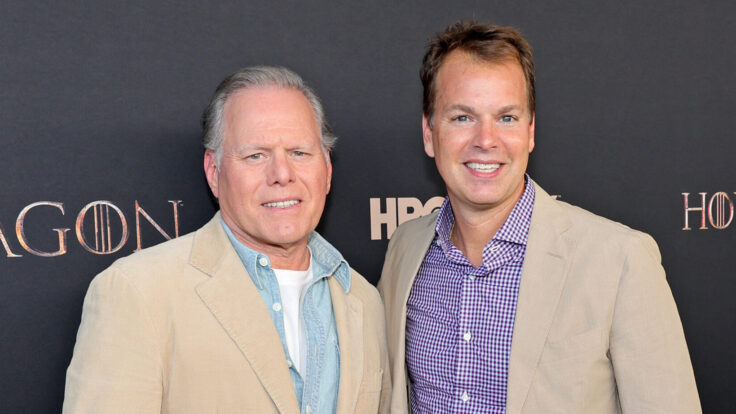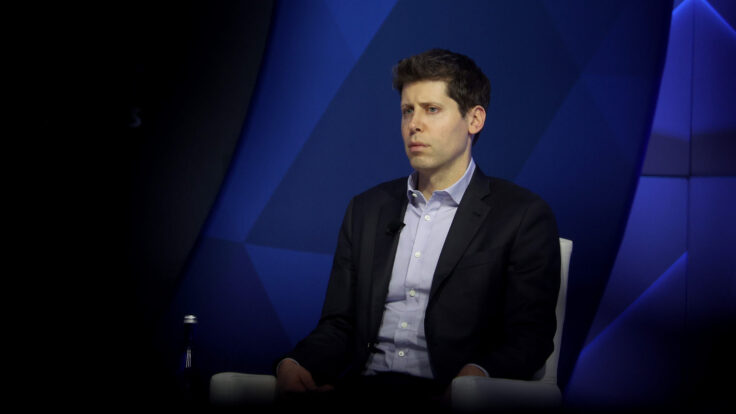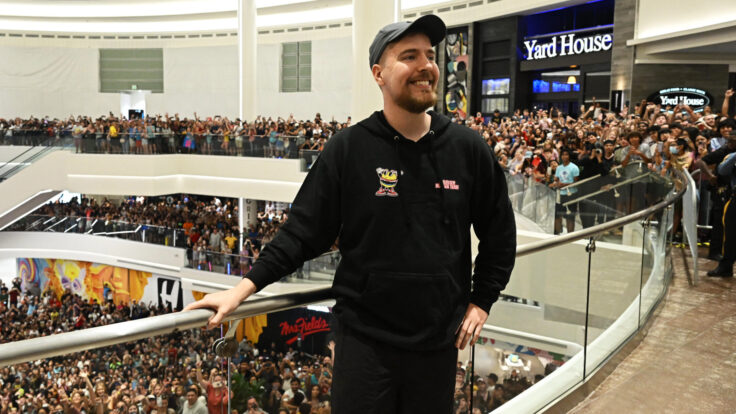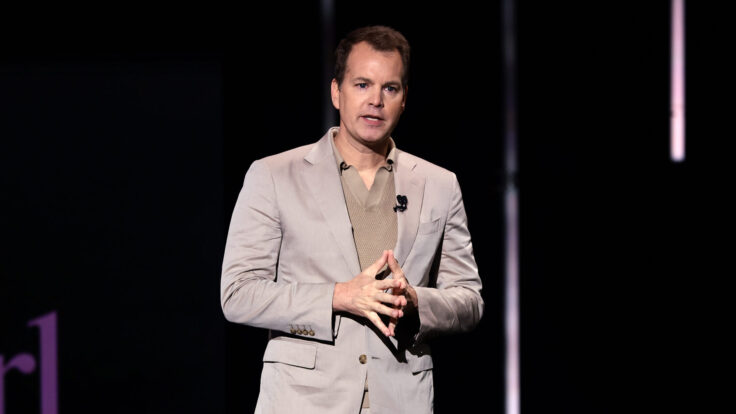 |
 |
|
Welcome back to a jam-packed What I’m Hearing, coming from sunny L.A.—wait, a hurricane?? Schedule note: I’ll be at TIFF this year, writing this email and recording pods, so please include me on your screening and event invites.
As always, if you’ve been forwarded this email, become a Puck member here.
Let’s begin…
|
|
|
- Bieber and Scooter are kinda done: I heard this week that Justin Bieber has been poking around for a new agency or manager, which begged the question: What about Scooter Braun? Turns out that Bieber and the manager who built his empire (and his ridiculous public persona) on Bieber’s talents haven’t spoken in months, per multiple sources. It’s tough because Bieber signed a new management deal right before Braun sold his Ithaca Holdings to South Korean giant HYPE in 2021, and Bieber still has time left on that. So neither side is confirming a split, but I’m told they’re headed separate ways, and their lawyers are involved.
This is part of a larger house-cleaning that Justin and wife Hailey Bieber have undertaken amid his recent health issues and canceled tour: CAA was just fired as his agency, per three sources, longtime lawyer Aaron Rosenberg has been replaced with David Lande at the Ziffren firm, and Justin’s now working with business manager Lou Taylor, last seen starring as the villain in the Britney Spears conservatorship drama. Bieber, who’s still only 29, also has another new lawyer, Michael Rhodes, whose firm helped close a $200 million deal earlier this year to sell his music rights to the Blackstone-backed Hipgnosis Songs Capital to pay off mounting debts. CAA declined to comment. Neither Braun nor Lande got back to me about the situation.
- Irony alert in WGA report: The Writers Guild makes strong points in today’s missive on consolidation in entertainment, titled The New Gatekeepers: How Disney, Amazon, and Netflix Will Take Over Media. What it doesn’t mention, weirdly enough, is that the WGA itself attempted to kill off well-funded independent buyers of its members’ work during its 2018-2021 campaign against the talent agencies. Endeavor Content and Wiip, the major agency-backed production companies, were founded amid the streaming boom to insert themselves (and their star clients) into the value equation that the global streamers would have preferred become closed. That came with a downside, of course—namely, the potential for conflicts of interest, which the WGA seized upon and shot down. But now, while Endeavor Content and Wiip still exist with new majority owners, they’re less closely attached to the size and influence of Endeavor and CAA, and thus not as effective an alternative to the Disney-Amazon-Netflix troika that the guild argues is taking over the industry. Welp!
- Iger in no mood for analysts: Disney has downgraded its September analyst conference in Orlando from a full-day presentation, which was set to include something from each division, to a half-day event focused only on theme parks. A Disney source cites the strikes as the reason, but that wouldn’t have applied to ESPN or ABC News, and obviously C.E.O. Bob Iger doesn’t have a lot of great news to discuss with the analysts who impact his share price.
- BET still in play: Paramount Global told bidders last night that it has abandoned its quest for a stock-juicing valuation on BET Media Group. But talks for the sale of a stake in the unit aren’t totally dead, I’m told. One bidder—Tyler Perry, backed by Mellody Hobson’s P.E. firm Ariel Alternatives—is still having conversations, albeit not at the price Paramount C.E.O. Bob Bakish originally hoped to garner. Perry always made the most sense to me because his prolific studio can stuff BET and BET+ with low-cost original content and make money as a seller and buyer. Maybe they can get creative on a deal that reduces Paramount’s leverage and gives Perry a path to profitability. (Paramount and Perry’s rep declined to comment.)
- Pat not thrilled with Vanna sub: Finally, an important update on the Wheel of Fortune host drama: Sony didn’t just send a message to Vanna White by replacing her for a day of Wheel taping when she was sick last month. Host Pat Sajak is also said to have been upset by the move to sub in a teacher, Bridgette Donald-Blue, for “Teacher’s Week” shows. That’s because Sajak prefers that his daughter, Maggie, fill in for White, as she has before. Pat was so irked that he declined to tape the traditional Wheel send-off segment with Donald-Blue in the Vanna role. Producers instead invited all three teacher contestants to join Sajak and Donald-Blue for a group farewell. (Sony declined to comment.)
|
| Next, a modest proposal from me… |
| Let Showrunners Staff Their Own Damn Rooms |
|
| I know that writers room staffing isn’t the only issue holding up a deal between the WGA and the studios. But it does seem like the easiest one to solve. The guild wants required minimum staffing regardless of need or showrunner desire. The studios call that “featherbedding” and have offered “flexibility,” depending on the show’s budget, whatever that means.
What are we doing here? Just make it the showrunner’s choice. Whoever wants the agreed-upon minimum—it was 12 writers for 22 episode broadcast shows, and 7 or 8 writers on cable or streaming shows in the guild’s first proposal, reduced in the more recent counter—must be allowed to have it; those who don’t want it don’t have to take it. Hacks co-creator Jen Statsky tweeted yesterday that she’s “very much for this”—great, guarantee Statsky a minimum staff. Taylor Sheridan or Mike White or David E. Kelly? Do your thing solo, maybe with the studio making a mandatory contribution to a writer training fund.
I know the fear—without strict mandatory minimums, studios will wiggle out, or showrunners will be forced to “choose” a full room at the expense of other aspects of the show. But that’s true even with fixed minimum staffing. We already kinda know how this will play out: A show with a $5 million/episode budget might have $200,000/episode earmarked for writers. If the WGA dictates there must be 7 writers rather than 3 writers, the studio won’t just automatically increase the budget to $5.5 million. An executive will turn to the showrunner and say, “Find it!” Meaning: cut elsewhere.
That’s why so many showrunners have been skeptical of this part of the guild’s platform. Variety aired some of those grievances, but this split is not new, it’s been there since before the strike. The Writers Guild is not a normal union. Normal is United Auto Workers, whose members, for the most part, do similar jobs, make similar wages, and carry similar levels of management responsibility (or lack thereof). Showrunners, by contrast, are basically bosses. They hire and fire, are responsible for massive budgets, and often make exponentially more money than their staffs. That’s management, not labor, yet showrunners are WGA members and subject to the same bargaining and rules.
Showrunners and auto workers also work—unlike most of the Writers Guild. By the WGA’s own numbers, only 5,951 of the guild’s 11,000 or so members earned any income as writers in 2021. Far fewer earned a living. I know those stats can be a bit misleading—even the most in-demand writers take time between projects—but it shows who the WGA membership actually is, who’s calling the shots in this strike, and who new rules like mandatory minimum staffing would benefit.
Now Jonathan answers one of the big financial questions of the new age of austerity in streaming… |
 |
| Are Residuals Driving the Streaming Purge? |
| When a service like Disney+ or Max de-platforms a made-for-streaming series, how much does it save in residuals for union talent? The answer is more than just a hypothetical as the cutbacks continue. |
|
|
|
| As we anxiously await the results of the revived AMPTP-WGA negotiations, I have preoccupied myself with another question: the number of series that streamers have pulled from their platforms. By one count, Max/HBO has nuked about 20 scripted originals. Disney+ and Hulu about six each—or, per another source, a combined total of about 50 series, albeit not all of them scripted—even as the Disney-owned platforms announced price increases. For Showtime and Starz, the count is reportedly one each. Paramount+: five. These evictions, of course, have negated the obligation to pay residuals, since made-for-streaming residuals are only due if a series is actually available.
When a service de-platforms a streaming series, how much does it save in residuals? Consider Diary of a Future President, which scarcely made it past the primaries: the Disney+ series produced two seasons of ten one-hour episodes each and was available on the platform for just three years. The first season premiered January 2020 and both seasons were withdrawn in May of this year. |
|
A MESSAGE FROM OUR SPONSOR
|
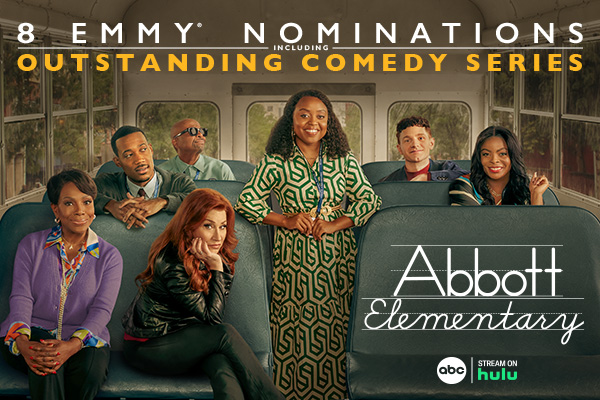 |
| “Abbott Elementary” is now nominated for 8 Emmy Awards, including Outstanding Comedy Series and Outstanding Lead Actress in a Comedy Series for Quinta Brunson. Winner of a Peabody Award and the Golden Globe, SAG and Critics Choice awards for Best Comedy Series, Abbott Elementary is “TV’s best show,” according to The Daily Beast, and “sharp and searingly funny” by the Chicago Sun-Times. The Emmy-nominated cast also includes Sheryl Lee Ralph, Janelle James, Tyler James Williams, and Taraji P. Henson. Abbott Elementary is for your Emmy consideration for Outstanding Comedy Series and all other eligible categories. |
|
|
| So let’s consider an episode from Season 1, assuming it was produced in the first half of 2019 and written a year earlier. (The timeline affects the relevant parameters.) The first year the episode is exhibited on the platform, the domestic Directors Guild residual is calculated as a residual base ($26,211 for a one-hour produced in the first half of 2019) multiplied by an exhibition year percentage that declines year-by-year (it’s 45 percent in the first year of the episode’s exhibition) and then multiplied by a tiering factor that depends on the number of domestic subscribers to the platform (it’s 100 percent for Disney+). That calculation yields $11,795. The foreign residual, for global platforms like Netflix, Disney+ and Amazon Prime Video, is another 35 percent, resulting in a total DGA first-year residual of $15,923, for a single episode. The residual goes to the director.
The Writers Guild residual is calculated similarly, but the base is slightly lower. The residual—$15,590—is shared by the credited writers on the episode in proportions that depend on the number of writers, the credits (Written by, Story by and/or Teleplay by), and whether any of the writers worked as teams.
The SAG-AFTRA residual is calculated in the same fashion as the DGA’s and WGA’s, but on an actor-by-actor basis, with each residual base equal to the actor’s initial compensation. However, high earners don’t see a residuals bonanza: there’s a ceiling on earnings that count for the calculation—it was $4,450 for a one-hour show produced in 2021. Series regulars, recurring characters, and guest stars usually make above that amount, so the ceiling kicks in and limits the residual.
Thus, by looking at the credits for a show, we can roughly figure the total cast compensation that flows into the residuals calculation. An ensemble yields a SAG-AFTRA total cast residual of $32,283 for the episode. Add in the DGA and WGA residuals and the total for the episode in its first exhibition year is $63,797.
But a show is more than a single episode, of course. Like Diary of a Future President, most streaming shows have about ten episodes per season. That means that the first season generates $637,966 in residuals for its first exhibition year. Because of the declining exhibition year percentage (the 45 percent figure above drops to 40 percent in the second year), the second year that Season 1 is exhibited, the aggregate residual will be lower: $567,081.
But wait. A show is usually more than one season. In the second year, not only is Diary’s first season available on the platform, but it is joined by Season 2, which will be in its first year of availability and thus will generate an aggregate residual of $637,966, just as Season 1 did. So the total residual payable for the second year the series is on-platform is equal to the residual for Season 1 ($567,081, paying for its second year of availability) added to the residual for Season Two ($637,966, paying for its first year of availability): about $1.2 million.
If Diary had had a third season, then each season would pay according to its age. And so on for subsequent years. But there are no subsequent years: The series was canceled after S2 and de-platformed a year later. So how much did Disney+ save in residuals? |
| New Age Hollywood Economics |
|
| The streamer saved a few million, it turns out: I fired up my spreadsheet and found a savings of about $2.6 million in residuals alone over what would have been the next five years, had the series continued deployment. And had just one more season been produced before the show was canceled and de-platformed, the five-year residual savings would have grown to $4.5 million. |
|
|
| Those aren’t huge numbers, but multiply them by Disney’s six de-platformed series and it’s not nothing, either. Nor does it count the pseudo-backends that some streamers offer to showrunners and stars, like Disney’s “SBE” (series bonus exhibit) calculation. Also not factored in are potential tax savings from “impairment charges”—write-offs—that can result from de-platforming.
And there’s more: Two months ago, the DGA achieved increases in the streaming residual. Going forward, the domestic residual is a bit higher and the foreign residual significantly so. The WGA and SAG-AFTRA will probably achieve similar improvements when their deals are finally reached. All that is good for talent, but it also increases the savings from de-platforming, and thus the incentive to do so.
Of course, some de-platformed series find new life elsewhere, such as on ad-supported FAST channels like Tubi and Pluto TV. The original owner of the series receives a license fee from the new platform, which further incentivizes the original de-platforming.
True, that new license fee triggers residuals, but the residuals are a percentage of the license fee, meaning that the original platform still nets a profit on the license—and saves on the residuals it would have paid had the content remained on its original platform. For talent, it means reduced residuals, and for consumers, the result is less content for their $15+ monthly subscriber fees, more advertising, and more difficulty finding itinerant series as they jump from platform to platform. Only the platforms benefit, but perhaps that’s what passes for a win in today’s streaming world. |
|
|
See you Sunday,
Matt
Correction: I misspelled Endeavor president/C.O.O. Mark Shapiro’s name on Sunday.
Got a question, comment, complaint, or you just want to call me anti-union or a studio shill? Email me at Matt@puck.news or call/text me at 310-804-3198. |
|
|
|
| FOUR STORIES WE’RE TALKING ABOUT |
|
|
|
|
|
 |
|
|
|
Need help? Review our FAQs
page or contact
us for assistance. For brand partnerships, email ads@puck.news.
|
|
You received this email because you signed up to receive emails from Puck, or as part of your Puck account associated with . To stop receiving this newsletter and/or manage all your email preferences, click here.
|
|
Puck is published by Heat Media LLC. 227 W 17th St New York, NY 10011.
|
|
|
|

